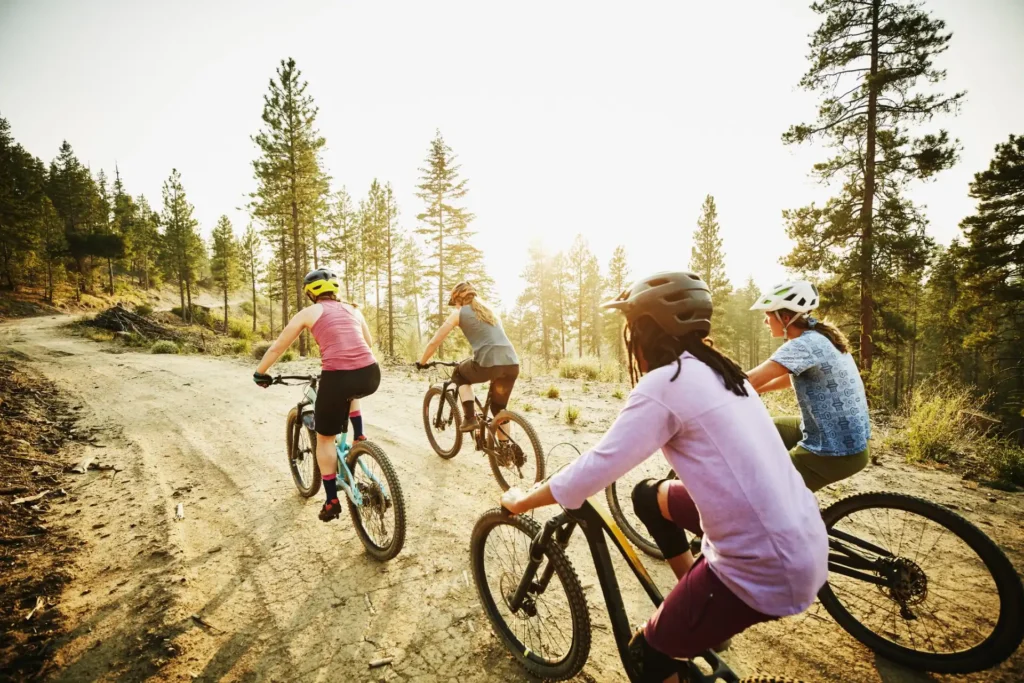Cycling is an exhilarating and eco-friendly way to get around, stay fit, and enjoy the great outdoors. However, as with any physical activity, safety should always be a top priority. Whether you’re commuting to work, cycling for recreation, or tackling more challenging trails, the right gear can make all the difference in protecting you from accidents and ensuring a comfortable ride.
1. Helmet: The Most Important Piece of Gear
A helmet is the single most important piece of gear you can wear as a cyclist. It protects your head in the event of a fall or collision and can significantly reduce the risk of serious injury or death. In many areas, wearing a helmet is not only recommended—it’s required by law.
When choosing a helmet, make sure it fits properly. A helmet should sit comfortably on your head, covering your forehead without tilting too far forward or backward. Look for a helmet with a secure chin strap and adjust it to ensure a snug fit. Additionally, check for a helmet with sufficient ventilation to keep you cool, especially during long rides.
2. Lights and Reflectors: Stay Visible at All Times
Whether you’re riding during the day or at night, visibility is key to staying safe on the road. Many cyclists are involved in accidents because they are not visible to drivers. Ensure your bike is equipped with both front and rear lights, as well as reflectors.
- Front lights: A white LED light that illuminates the path ahead, helping you see in low-light conditions.
- Rear lights: A red LED light that signals your presence to vehicles behind you, especially at night.
- Reflectors: Make sure your bike has reflectors on the pedals, wheels, and rear, or consider adding reflective tape to your frame and gear.
For increased visibility during daylight hours, consider wearing bright, reflective clothing or accessories that make you stand out to other road users.
3. Proper Cycling Gloves: Comfort and Protection
Cycling gloves serve two primary functions: enhancing comfort and providing protection. The padding in cycling gloves helps absorb vibrations from the handlebars, reducing hand fatigue during long rides. They also protect your hands in case of a fall, preventing abrasions and cuts.
When choosing cycling gloves, look for a pair with padded palms and breathable materials to keep your hands cool and dry. Fingerless gloves are popular for warmer weather, while full-finger gloves offer added protection in cooler temperatures or off-road conditions.
4. Cycling Shorts: Boost Comfort for Long Rides
If you’re planning on longer rides, investing in a pair of quality cycling shorts is a must. Cycling shorts are designed with a padded chamois (seat pad) that provides extra comfort and reduces friction between your body and the saddle. This padding helps prevent saddle soreness, making it easier to ride for extended periods without discomfort.
Look for shorts made from moisture-wicking materials that keep you dry and comfortable, especially during hot rides. You can choose between padded cycling shorts or bib shorts (which include straps for added support).
5. Water Bottle and Cage: Stay Hydrated
Staying hydrated is critical, especially during long rides or on hot days. A water bottle and cage attached to your bike frame ensure you have easy access to water while cycling. Many cyclists opt for bottles made from lightweight materials like plastic or aluminum.
Consider investing in an insulated water bottle to keep your drink cool for longer periods. Additionally, some cyclists prefer hydration packs, which are backpacks with a water reservoir and straw for hands-free drinking.
6. Cycling Shoes and Pedals: Better Pedaling Efficiency
Cycling shoes and pedals are designed to enhance your pedaling efficiency by providing a secure connection between your feet and the bike. Clipless pedals, which require specialized cycling shoes with cleats, allow for more precise control over your bike, better power transfer, and a more efficient pedaling motion.
If you’re a beginner, you might prefer flat pedals, which don’t require clipless shoes but still offer a stable surface for your feet. Over time, however, clipless pedals can help improve your overall cycling performance.
7. Bike Lock: Secure Your Bike
Whether you’re running errands, taking a break, or leaving your bike parked outside, a sturdy bike lock is essential to keep your bike safe from theft. There are various types of locks available, including U-locks, chain locks, and folding locks.
A U-lock is considered one of the most secure options because it’s hard to break with tools. When locking your bike, always secure both the frame and wheels to an immovable object, and avoid leaving your bike in high-theft areas for long periods.
8. Cycling Jacket: Weather Protection
Cycling in all weather conditions requires the right outerwear. A good cycling jacket will protect you from rain, wind, and cold temperatures, allowing you to ride comfortably and safely no matter the weather. Look for jackets made from breathable, waterproof, and wind-resistant materials.
For warm weather, consider a lightweight jacket with vents that allows air to flow through, keeping you cool during longer rides. In colder weather, choose an insulated jacket that helps trap body heat and provides extra protection from the elements.
9. Multi-tool: Be Prepared for Bike Maintenance
A compact bike multi-tool is a must-have for cyclists who want to be prepared for any mechanical issues that may arise during a ride. Multi-tools typically include a variety of wrenches, screwdrivers, and tire levers, which can help you make quick adjustments, fix flat tires, or tighten loose components.
Make sure your multi-tool is small enough to fit in your pocket or saddlebag for easy access when you need it most.
10. Saddlebag: Carry Your Essentials
A saddlebag or small bike bag is a great way to carry your essential tools, snacks, and extra gear on longer rides. You can store items like your multi-tool, spare tire tube, first-aid kit, and wallet in a saddlebag, keeping them out of your way while still accessible when needed.
Look for a saddlebag that’s water-resistant and has enough space to fit your essentials without being too bulky.
Conclusion
Safety should always be the top priority when cycling, and the right gear can make all the difference in ensuring a safe and comfortable ride. From your helmet to your multi-tool, the essential gear outlined in this post helps protect you from accidents, enhance your cycling performance, and ensure that you’re prepared for anything on the road.
Invest in these key pieces of cycling gear, and you’ll be ready to hit the road with confidence, knowing that you’ve taken the necessary steps to protect yourself and enjoy a safe cycling experience. Happy cycling!

